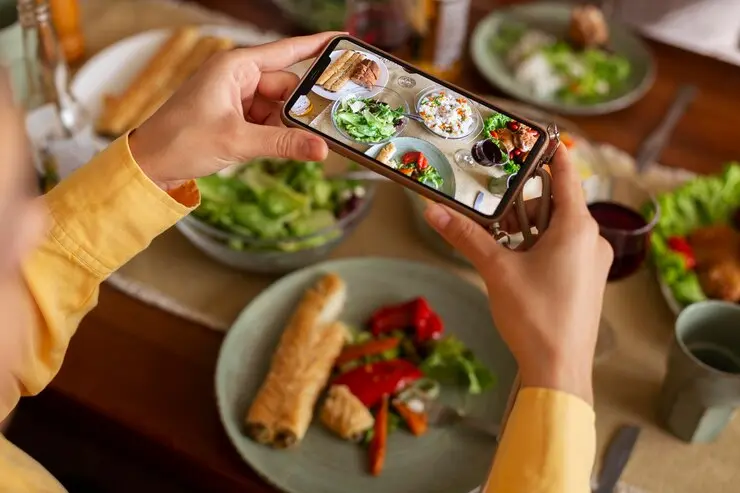The development of waste food sharing applications in recent times brought about a fundamental change in how we perceive and address food waste. These creative platforms redistribute excess food that would otherwise wind up in landfills by connecting people, businesses, and communities via the use of technology. This essay examines how waste food sharing apps are changing our relationship with food and sustainability and their tremendous social impact.
Introduction
An innovative approach to the urgent problem of food waste is provided by waste food sharing apps. These applications provide a platform for transferring excess food to those in need, which is a ray of hope as societies struggle with the astounding amount of food wasted annually. With the help of waste food sharing applications, people can effectively connect and share food resources, be it leftovers from a party or extra inventory from restaurants at the end of the day.
The Problem of Food Waste
When exploring how waste food sharing apps affect society, it is important to recognize the scope of the issue these applications are trying to solve. A third of all food produced for human consumption is thought to be wasted annually on a global scale. This corresponds to about $1 trillion worth of food, or 1.3 billion tons. In addition to the financial loss, food waste has a major negative impact on the environment by increasing greenhouse gas emissions and worsening resource depletion.
Role of Waste Food Sharing Apps
Apps for sharing wasted food serve as middlemen, bringing people in need and surplus food together. Peer-to-peer models are usually used by these apps to enable companies and people to submit listings of food items that are available. Following that, users can peruse these ads and select excess food to either donate or consume. Some platforms improve user experience and enable timely food redistribution with extra features like location-based notifications and real-time updates.
Social Impact
Social impact is one of the biggest contributions made by waste food sharing applications. These platforms enable communities to alleviate food insecurity and promote a sense of solidarity by allowing the allocation of excess food. Waste food sharing apps are a lifeline in a world where millions of people suffer from hunger because they make sure that edible food is not wasted but instead feeds the hungry.
Furthermore, by engaging people to actively participate in reducing food waste, waste food sharing applications foster empathy and community engagement. Users of these applications become agents of positive social change, whether it is through giving away extra food from their own kitchens or offering their time to distribute food to nearby shelters. Sharing meals is a gesture of kindness, giving, and community duty that goes beyond simple dietary needs.
Economic Impact
Waste food sharing apps offer social benefits, but they also have important economic ramifications. Free or inexpensive meals can help people and families who are having a hard time making ends meet by relieving financial strain and enhancing general wellbeing. Through rerouting excess food from establishments to customers, these applications assist in decreasing food costs and extending restricted funds even farther.
Furthermore, by lowering the costs connected with food waste disposal, waste food sharing applications present a potential source of cost savings for organizations. By redistributing excess inventory and reducing financial losses, firms can use these platforms in place of paying for the disposal of unsold or expired food items. Waste food sharing apps, therefore, establish a win-win situation in which people and companies get financial rewards.
Environmental Impact
One cannot emphasize how waste food sharing apps affect the environment. These platforms assist in lowering methane emissions and relieving the burden on natural resources by removing edible food from landfills. Large amounts of land, water, and energy are needed for the resource-intensive process of producing food. When edible food is thrown away, landfill management and transportation expenses add to the environmental costs already incurred by wasting these resources.
Waste food sharing applications ease resource conservation and reduce the environmental impact of food production by allowing surplus food to be redistributed. Furthermore, these platforms support sustainable consumption practices and the reduction of waste at the source by increasing awareness of the negative effects of food waste.
Challenges and Limitations
Apps for sharing leftover food have significant drawbacks and restrictions even with their revolutionary potential. Technical problems that impede user adoption and engagement include app dependability and UI design. Furthermore, people may be discouraged from using these platforms due to worries about food safety and hygiene, especially if they are purchasing food from unknown sources.
Furthermore, waste food sharing applications have to traverse a complicated regulatory environment that controls food donation and redistribution. Current laws differ from jurisdiction to jurisdiction and may place limitations on the kinds of food that can be shared in addition to raising issues with responsibility for both givers and recipients. In order to ensure that waste food sharing activities maximize social benefit while adhering to legal standards, app developers, government agencies, and other stakeholders must work together to address these regulatory obstacles.
Regulatory Landscape
The legislative environment pertaining to applications that share leftover food is changing quickly as legislators realize how important it is to both promote and control these cutting-edge platforms. While some states have passed legislation to encourage food donation and shield food donors from legal action, other states are investigating novel strategies to encourage the decrease of food waste and enable the redistribution of food.
For example, businesses that give excess food to charitable groups may be eligible for liability exemptions or tax advantages in certain countries. Others have imposed obligations on large food producers and merchants to report food waste, or they have instituted targets for reducing food waste. Governments may foster an atmosphere that encourages waste food sharing apps to flourish and optimize their social and environmental impact by passing laws and regulations that support them.
Case Studies
Food insecurity and waste can be effectively addressed by using waste food sharing applications, as evidenced by the numerous success stories in this regard. By linking consumers with excess food from nearby companies and homes, applications such as OLIO and Too Good To Go, for example, have become immensely popular. Significant amounts of food have been kept out of landfills because of these services, which have also helped users feel more connected to one another.
Through cooperation and innovation, obstacles like legislative restrictions and logistical limitations have been addressed. To expedite food distribution and guarantee adherence to safety regulations, many waste food sharing applications have established partnerships with food banks, charitable organizations, and governmental bodies. These apps have shown the scalability and sustainability of their approach to reducing food waste by utilizing technology and community connections.
Future Prospects
In the future, waste food sharing apps have a great deal of potential to grow and become essential parts of the world food chain. The need for creative solutions like waste food sharing apps will only increase as people become more conscious of sustainability and food waste. These platforms’ efficacy might be further increased by integration with other sustainability programs including urban agriculture, food recovery, and composting, which would also foster synergies with complementing efforts.
Furthermore, there are exciting prospects to raise the effectiveness and transparency of waste food sharing operations due to technological developments like blockchain and artificial intelligence. Waste food sharing apps can improve user trust and accountability, measure food redistribution metrics, and optimize food matching algorithms by leveraging data analytics and decentralized networks.
Conclusion
Waste food sharing applications are an effective means of tackling the environmental, social, and economic issues related to food waste. These platforms enable communities to address food insecurity, encourage sustainable consumption practices, and lessen the environmental effect of food production by facilitating the redistribution of excess food. The promise of waste food sharing apps to transform food waste management is evident, despite ongoing obstacles and constraints. By incorporating technology and innovation, individuals can learn how to create a food app that promotes the redistribution of surplus food, thereby contributing to a future where edible food waste is minimized, and everyone has access to affordable, wholesome food. Collaboration among stakeholders further strengthens this vision, paving the way for a more sustainable and equitable food system.
FAQs (Frequently Asked Questions)
Are waste food sharing apps safe to use?
- By imposing stringent regulations and verification procedures for food listings, waste food sharing apps put user safety and hygiene first. But before consuming food, consumers should be cautious and check it.
How can businesses benefit from participating in waste food sharing programs?
- Businesses can reduce disposal costs, enhance their corporate social responsibility initiatives, and foster positive relationships with the community by donating surplus food through waste food sharing apps.
What types of food are typically shared on waste food sharing apps?
- As long as they are safe to eat, a variety of foods, such as fresh vegetables, baked products, packaged foods, and cooked meals, can be shared on waste food sharing applications.
Can individuals volunteer to help distribute surplus food through waste food sharing apps?
- Yes, many waste food sharing apps offer opportunities for individuals to volunteer as food ambassadors or community coordinators to help distribute surplus food to those in need.
How can I get involved in supporting waste food sharing initiatives in my community?
- You can start by downloading a waste food sharing app and exploring opportunities to donate surplus food, volunteer as a food ambassador, or spread awareness about food waste reduction efforts in your community.





